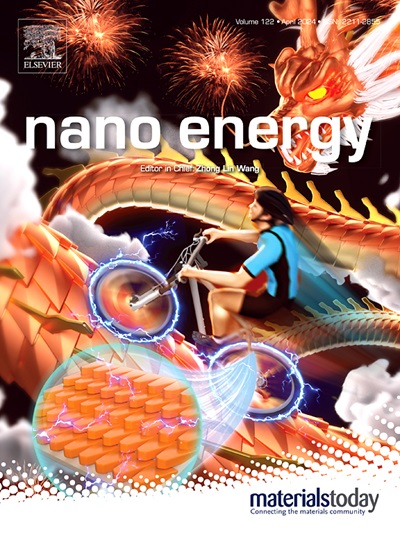Microporous Structure Engineering of Hard Carbon through Synergistic Catalytic Dehydration and Activation for Enhanced Sodium Ion Storage
IF 16.8
1区 材料科学
Q1 CHEMISTRY, PHYSICAL
引用次数: 0
Abstract
Hard carbon derived from renewable biomass is a promising anode material for sodium-ion batteries (SIBs), due to its graphite-like microcrystalline structure and porous architecture. However, engineering the porous structure to balance Na+ transport and electrolyte stability remains a significant challenge. Excessively large pores may induce electrolyte decomposition, while overly small pores can restrict Na+ accessibility. Both of these compromises reversible capacity, rate capability, and initial Coulombic efficiency (ICE). Herein, a synergistic catalytic dehydration and activation strategy is developed to precisely engineer the microporous structure of hard carbon for enhanced Na+ storage. By redirecting cellulose dehydration pathways through esterification and chemical activation, the yield of hard carbon is significantly enhanced while generating an abundant desirable micropores (<1.36 nm). These tailored micropores facilitate Na+ storage through surface adsorption, intercalation, and pore-filling mechanisms. Furthermore, the optimized structure promotes the pre-desolvation of solvated Na+ while suppressing decomposition of large solvated Na+ clusters, thereby inhibiting unstable solid-electrolyte interphase (SEI) layer formation. The engineered hard carbon delivers outstanding performance, including a high reversible capacity of 368 mAh g−1 at 0.02 A g−1, an ICE of 90%, and remarkable cycling stability. This scalable strategy is applicable to various biomass precursors, providing a practical pathway for advancing next-generation SIB anode materials.

协同催化脱水活化硬炭微孔结构工程增强钠离子储存
来源于可再生生物质的硬碳由于其类似石墨的微晶结构和多孔结构,是一种很有前途的钠离子电池负极材料。然而,设计多孔结构来平衡Na+输运和电解质稳定性仍然是一个重大挑战。过大的孔隙会导致电解液分解,过小的孔隙会限制Na+的可及性。这两种方法都会损害可逆容量、速率能力和初始库仑效率(ICE)。本文提出了一种协同催化脱水和活化策略,以精确地设计硬碳的微孔结构,以增强Na+的储存。通过酯化和化学活化重定向纤维素脱水途径,显著提高了硬碳的产率,同时产生了大量所需的微孔(<1.36 nm)。这些定制的微孔通过表面吸附、插层和孔隙填充机制促进Na+的储存。此外,优化后的结构促进了溶剂化Na+的预溶解,同时抑制了大溶剂化Na+团簇的分解,从而抑制了不稳定固体-电解质间相(SEI)层的形成。工程硬碳具有出色的性能,包括在0.02 a g - 1时具有368mah g - 1的高可逆容量,ICE为90%,以及出色的循环稳定性。这种可扩展的策略适用于各种生物质前体,为推进下一代SIB阳极材料提供了切实可行的途径。
本文章由计算机程序翻译,如有差异,请以英文原文为准。
求助全文
约1分钟内获得全文
求助全文
来源期刊

Nano Energy
CHEMISTRY, PHYSICAL-NANOSCIENCE & NANOTECHNOLOGY
CiteScore
30.30
自引率
7.40%
发文量
1207
审稿时长
23 days
期刊介绍:
Nano Energy is a multidisciplinary, rapid-publication forum of original peer-reviewed contributions on the science and engineering of nanomaterials and nanodevices used in all forms of energy harvesting, conversion, storage, utilization and policy. Through its mixture of articles, reviews, communications, research news, and information on key developments, Nano Energy provides a comprehensive coverage of this exciting and dynamic field which joins nanoscience and nanotechnology with energy science. The journal is relevant to all those who are interested in nanomaterials solutions to the energy problem.
Nano Energy publishes original experimental and theoretical research on all aspects of energy-related research which utilizes nanomaterials and nanotechnology. Manuscripts of four types are considered: review articles which inform readers of the latest research and advances in energy science; rapid communications which feature exciting research breakthroughs in the field; full-length articles which report comprehensive research developments; and news and opinions which comment on topical issues or express views on the developments in related fields.
 求助内容:
求助内容: 应助结果提醒方式:
应助结果提醒方式:


